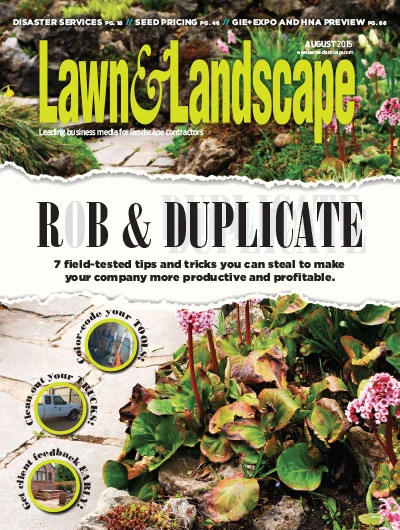
 An increasingly popular tax-saving strategy involves transferring ownership of a building, property, equipment or other assets used by a snow and ice removal business to the operation’s owner, partner or shareholder. This is known as a sale/leaseback. There are a number of benefits for both the business owner and the asset owner.
An increasingly popular tax-saving strategy involves transferring ownership of a building, property, equipment or other assets used by a snow and ice removal business to the operation’s owner, partner or shareholder. This is known as a sale/leaseback. There are a number of benefits for both the business owner and the asset owner.
A basic sale/leaseback.
Since a building and the land on which it sits are a necessity for many businesses, a sale/leaseback allows a contractor to reduce his or her investment in non-core business assets (the property) while freeing up cash.
These sale-leaseback transactions where real estate or other property owned by the snow removal business is sold to the operation’s owner, shareholders or investors and leased back to the business is an increasingly popular strategy. In fact, sale/leaseback transactions are frequently used to free up capital for the snow removal operation.
Favorable leasing.
One of the perks enjoyed by a snow removal business selling its building and becoming a tenant is the ability to negotiate favorable lease terms. In a typical lease, a lessee might make rental payments while the lessor pays all of the property's operating expenses. With a so-called “net” lease arrangement, the tenant pays rent and also pays all of the property’s operating expenses. Thus, the landlord receives a fixed rental payment, net of all property expenses.
Most sale/leasebacks are structured as so-called “triple-net” leases with the tenant usually responsible for taxes, insurance and maintenance. A long-term, “hands-off” lease gives the tenant control over the property such as when the tenant owned it. The tenant can, of course, negotiate with the building’s new owner to include options that allow for future expansion and even possible sublease of the property.
As property owners, the interest expense and depreciation were the only tax deductions usually available to the snow and ice removal business for its property. On the other hand, a snow and ice removal business that leases property can write off the total payments as a tax expense. Thus, a sale/leaseback often offers a greater tax advantage and produces a bigger tax deduction for the business.
Unlike a mortgage, a sale/leaseback can finance as much as 100 percent of the appraised value of a business’s land and buildings. As a result, a sale/leaseback is often a more efficient financing tool. However, because a sale/leaseback is not technically a financing instrument there are no restrictive covenants, and fewer covenants give the business greater control over its operations.
Trust, LLC or corporation.
Since owning commercial real estate involves risks that are different from owning a business, establishing a limited liability company (LLC), other similar entity or even a trust, corporation or partnership to own the building allows the two to be kept completely separate. The new owner can then lease the building back to the business or, if space permits, to other tenants as well.
A trust is a unique legal entity as well as a separate taxable entity. A trust usually involves an arrangement created either by a will upon the creator’s death or by a trust instrument that may take effect during the creator’s life. Under either arrangement, a trustee takes title to the property in order to conserve and operate it for the beneficiaries.
Of course, the trust will be recognized as a separate taxable entity even where the beneficiaries are the same persons as those who planned or created it. Naturally, the trust must give the trustee genuine responsibility for conserving and protecting the trust’s assets.
A business or commercial trust is one created for carrying on a profit-making business, usually using capital or property supplied by the trust’s beneficiaries. The trustee or other designated persons, regardless of whether appointed or controlled by the trust’s beneficiaries, manage the undertaking. For federal tax purposes, this arrangement is usually treated as an association which generally is taxed as either a corporation or partnership, all the while standing alone from the other types of trusts.
Material participation.
Regardless of the type of entity used to hold title to the newly-acquired building, our tax laws often pose a dilemma for the new owners. Thanks to provisions of the 2010 Health Care and Education Reconciliation Act that came into play in 2013, many individuals now find themselves subject to a 3.8 percent Net Investment Income (NII) tax.
Net investment income includes not only rent, but interest, dividends, annuities and royalties. Although NII does not apply to income derived in the ordinary course of a trade or business, it does include income from so-called “passive” activities.
Not too surprisingly, it is the IRS that decides whether an individual “materially participates” in business activities. That is, if the individual participates on a “regular, continuous and substantial basis.” Should the IRS feel an individual’s participation is not material, he or she cannot deduct losses to the same extent as a business owner who does materially participate.
Thus, regardless of the type of entity chosen by the new owners to operate the building or other property, the NII adds an additional tax on the profits from that “passive” activity. And, losses are also denied or limited for “passive” operations.
Reversing or getting out.
Consider an owner who is thinking about retiring or selling his company in a few years. Many small businesses are sold with seller financing, meaning the owner would get a portion of the price up front, and then the buyer would pay the bulk of the purchase price during the next few years.
Should the buyer fail, the owner could be hit with a double whammy of not getting paid for the business and the building losing its only tenant. The original owner is still required to make mortgage payments on the building, only now those payments must come from his own pocket.
This doesn’t mean that buying the building or equipment used by a snow operation is a bad idea, but it heavily increases the business owner’s risk. Real estate has an important role to play in a diversified investment portfolio, but many small business owners are not adequately diversified.
Having most of one’s net worth in a small business exposes the owner to risk. Adding real estate-related risk to the business, combined with the general health of the local economy, increases risk. The good news is that there are strategies that can help minimize or defer taxes, resulting in a larger portion of any eventual sale proceeds going into the seller’s pocket at closing. Common strategies such as delaying the receipt of the proceeds from the sale, converting from a regular C corporation to an S Corporation or LLC, transferring stock in the entity to family members, structuring the transaction to obtain a more favorable capital gains tax treatment as well as using trusts to reduce estate taxes.
With the current economic climate and unfriendliness of potential lenders, a sale/leaseback transaction is an efficient and effective means of generating the capital that might be needed to expand your business. Bottom line, a sale/leaseback with a net lease can work for both buyers and sellers.
Buying the real estate, equipment or other assets of a snow removal business generate benefits such as:
- A predictable, long-term cash flow
- Returns typically higher than bonds
- Low management requirements
- Rent increases and value appreciation to hedge against inflation.
However, lurking on the horizon are potential changes to the rules dictating the accounting treatment of leases and possibly sale/leasebacks. Although unlikely to impact on the popularity of sale/leaseback transactions, the changes now being contemplated deserve attention and the services of a qualified accountant or attorney. A local appraiser can help establish a fair sales price and a tax professional is required for the transaction basics.
The author is a financial writer based in Ardmore, Pa.

Explore the August 2015 Issue
Check out more from this issue and find your next story to read.
Latest from Lawn & Landscape
- Connect, Control & Conserve with Horizon Technical Services
- Use Horizon's Parts Hotline
- How I built a Top 100 company
- Horizon’s Exclusive TurfGro Fertilizer
- Grow your business with mosquito control
- LandCare adds 2 branches in SoCal, promotes Aleman to branch manager
- Spray them away
- PERC helps debut propane direct-injection fuel system at ACT Expo 2025





